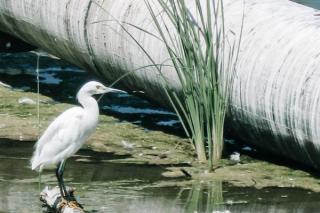
Rentschler Field wetland mitigation & invasive species control
- Client Name
- State of Connecticut Office of Policy & Management
- Location
- Connecticut, USA

Challenge
The State Office of Policy and Management (OPM) retained SLR to assist in the preparation of environmental permit applications associated with the firm’s design for expansion of their current parking facilities located at Rentschler Field Stadium.
The project involved culverting watercourses and new storm drain discharges associated with construction of parking facilities partly within the 100-year floodplain of unnamed tributary of Tewderpot Brook.
Solution
SLR assisted in the preparation of Connecticut Department of Energy and Environmental Protection (DEEP) 401 Water Quality Certificate, Inland Wetlands, and Flood Management Certification permit applications. In addition to state permits, a United States Army Corps of Engineers 404 Individual Permit application was also prepared. SLR also provided final design plans.
As part of the permit application, OPM was required to mitigate for proposed wetland impacts associated with the expansion of their parking facilities. The selected wetland mitigation included restoration of a heavily infested (common reed (Phragmites australis)) 2-acre emergent marsh and scrub shrub wetland system near the new parking facility.
SLR developed a detailed invasive species management plan that was approved by both the Army Corps and CT DEEP and has primary responsibility for oversight of its implementation for a period of 3 years. Follow-up inspections will continue for a period of 5 to 7 years following to ascertain success.
Impact
The regulatory agencies actually embraced the parking lot design as it incorporated an innovative solution utilising fibre reinforced turf parking in lieu of asphalt or gravel. This green design provided for natural infiltration of runoff into on-site sandy soils for the majority of the new 6,500 parking spaces. Runoff from paved areas was treated with water quality ponds; all such design improvements being pitched as part of the overall impact mitigation strategy.

